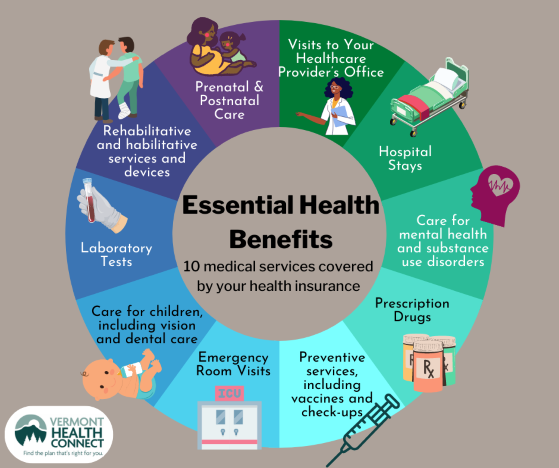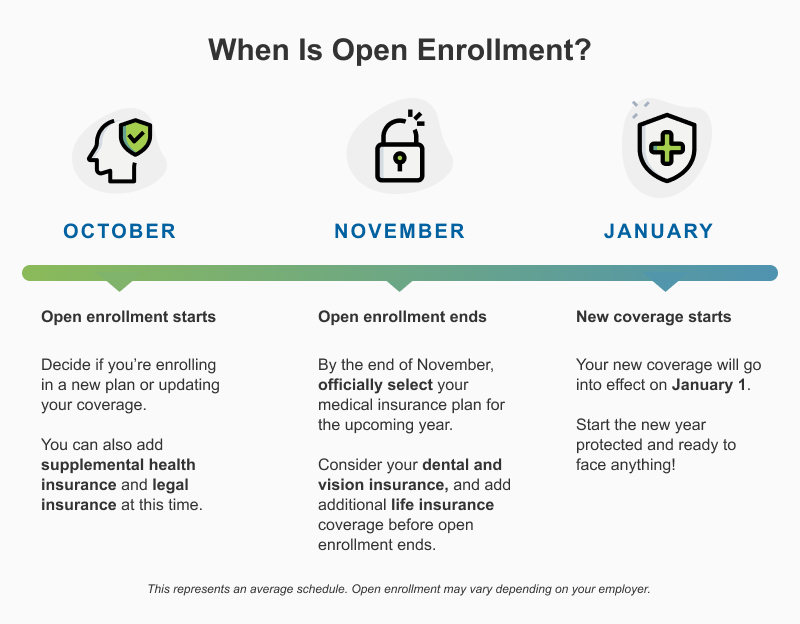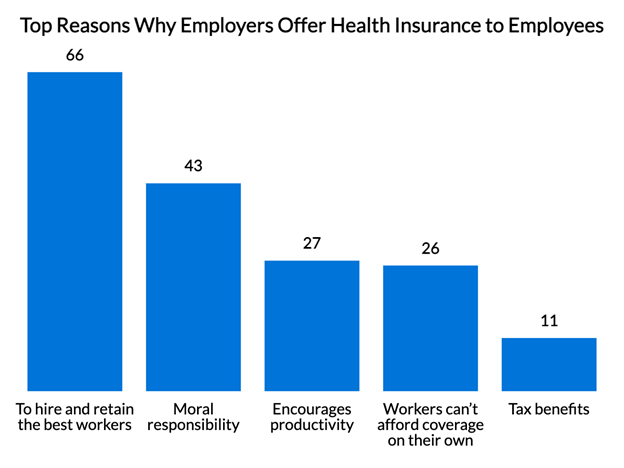Some Ideas on Medicare Advantage Agent You Need To Know
Some Ideas on Medicare Advantage Agent You Need To Know
Blog Article
The smart Trick of Medicare Advantage Agent That Nobody is Discussing
Table of ContentsMedicare Advantage Agent for Beginners7 Simple Techniques For Medicare Advantage AgentAn Unbiased View of Medicare Advantage Agent

follows from perplexing the relatively young age account of the without insurance with the much better health and wellness, usually, of younger individuals. This obscures the link between wellness status and medical insurance. For those without accessibility to work environment medical insurance, bad health and wellness is a prospective barrier to purchasing nongroup coverage since such coverage might be extremely valued, omit pre-existing conditions, or be simply inaccessible. The number of without insurance Americans is not particularly huge and has not transformed recently. 7 out of ten participants in a country wide representative study thought that less Americans did not have health and wellness insurance coverage than in fact do(Fronstin, 1998). Approximately fifty percent(47 percent )thought that the number of individuals without health and wellness insurance lowered or remained constant over the last half of the last years(Blendon et al., 1999). This drop of nearly 2 million in the variety of people 'without insurance (a reduction
of about 4 percent)is absolutely a positive modification. With a softer economic climate in 2000 the most up to date reported gains in insurance coverage might not proceed(Fronstin, 2001 ). The decline in the number of uninsured will not continue if the economic situation remains slow-moving and wellness treatment prices remain to outpace inflation. This is since the information were collected for a period of strong economic efficiency. Of the approximated 42 million individuals that were without insurance, almost regarding 420,000(regarding 1 percent)were under 65 years old, the age at which most Americans come to be qualified for Medicare; 32 million were grownups in between ages 18 and 65, around 19 percent of all grownups in this age; and 10 million were children under 18 years of age, regarding 13.9 percent of all youngsters (Mills, 2000). These price quotes of the variety of individuals without insurance are produced from the yearly March Supplement to the Existing Population Survey (CPS), conducted by the Census Bureau. Unless otherwise noted, national quotes of people without medical insurance and percentages of the populace with different kinds of protection are based upon the CPS, the most extensively used resource of estimates of insurance policy coverage and uninsurance prices. These studies and the quotes they yield are described briefly in Table B. 1 in Appendix B - Medicare Advantage Agent. These surveys differ in dimension and sampling methods, the questions that are asked about insurance policy
The smart Trick of Medicare Advantage Agent That Nobody is Talking About
insurance coverage, and the moment duration over which insurance protection or uninsurance is measured(Lewis et al., 1998, Fronstin, 2000a ). Still, the CPS is especially beneficial since it produces annual price quotes fairly quickly, reporting the previous year's insurance policy coverage estimates each September, and due to the fact that it is the basis for a consistent set of price quotes for even more than two decades, enabling evaluation of patterns in protection with time.

The 6-Minute Rule for Medicare Advantage Agent
Over a three-year period starting early in 1993, 72 million people, 29 percent of the U.S. populace, were without insurance coverage for at the very least one month. Within a solitary year(1994), 53 million individuals experienced at the very least a month without protection(Bennefield, 1998a). 6 out of every ten uninsured grownups are themselves employed. Although working does boost the possibility that and one's family participants will certainly have insurance coverage, it is not an assurance. Also participants of families with 2 full-time wage income earners have practically a one-in-ten chance of being uninsured (9.1 percent without insurance price)(Hoffman and Pohl, 2000 ). The connection between medical insurance and access to care is well developed, as recorded later on in this phase. Although the connection in between medical insurance and health and wellness outcomes is neither direct nor basic, a considerable professional and health services research study literature web links medical insurance coverage
to improved access to care, much better top quality, and boosted personal and populace health status. The 2nd record, on personal health and wellness results for without insurance adults, is represented by the inner circle of the figure, while the 3rd record, on household wellness, incorporates the subjects of the second record but stresses a various system of evaluation, particularly, the family. The 6th record in the series will certainly provide information about methods and campaigns embarked on in your area, statewide, or nationally to deal with the lack of insurance and its damaging impacts. Degrees of evaluation for taking a look at the effects of uninsurance. This discussion of health and wellness insurance protection concentrates mainly on the united state populace under age 65 due to the fact that basically all Americans 65 and older have Medicare or various other public protection.
It focuses particularly on those without any type of wellness insurance coverage for any kind of length of time. The issues dealt with by the underinsured remain in some areas similar to those encountered by the without insurance, although they are generally much less serious. Uninsurance and underinsurance, however, involve definitely various policy issues, and the strategies for addressing them might differ. Throughout this research and the five reports to adhere to, the main focus is on persons without health insurance coverage and hence no assistance in spending Continued for healthcare beyond what is offered with charity and safety web institutions. Medical insurance is an effective variable impacting receipt of care since both people and doctors react to the out-of-pocket rate of services. Medical insurance, nonetheless, is neither required nor sufficient to get accessibility to clinical solutions. Nevertheless, the independent and direct result of wellness
insurance coverage on accessibility to health and wellness solutions is well established. Others will certainly obtain the healthcare they require even without health and wellness insurance, by paying for it expense or seeking it from carriers that use care complimentary or at extremely subsidized rates. For still others, health and wellness insurance coverage alone does not make certain invoice of care as a result of various other nonfinancial obstacles, such as an absence of wellness treatment providers in their area, minimal accessibility to transportation, illiteracy, or etymological and cultural differences. Formal research concerning without insurance populaces in the United see here now States dates to the late 1920s and early 1930s when the Committee on the Expense of Healthcare generated a series of records concerning funding physician workplace check outs and hospital stays. This issue ended up being significant as the varieties of clinically indigent climbed throughout the Great Depression. Empirical research studies regularly support the link in between access to care and improved health outcomes(Bindman et al., 1995; Starfield, 1995 ). Having a normal source of care can be considered a predictor of accessibility, instead than a straight step of it, when wellness results are themselves utilized as access signs. This expansion of the concept of gain access to measurement was made by the IOM Committee on Keeping An Eye On Accessibility to Personal Wellness Care Provider(Millman, 1993, p. Whether or not parents are guaranteed shows up to impact whether or not their kids get treatment as well as just how much careeven if the youngsters themselves have coverage(Hanson, 1998). The health of moms and dads can affect their capacity to care for their kids and the level of household stress and anxiety. Fretting about their children's access to care is itself a resource of stress for parents. 3 phases follow in this report. Phase 2 supplies an overview of how employment-based health insurance, public programs and private insurance coverage run and connect to provide extensive but insufficient protection of the U.S. population. This consists of a testimonial of historic fads and public laws affecting both public and personal insurance, a discussion of the communications among the different sorts of insurance coverage, and an evaluation of why people relocate from one program to one more or finish up

Report this page